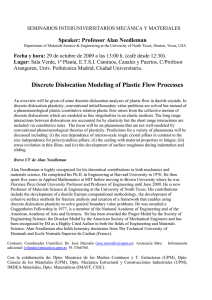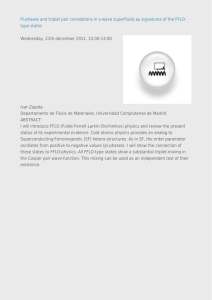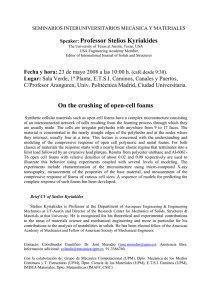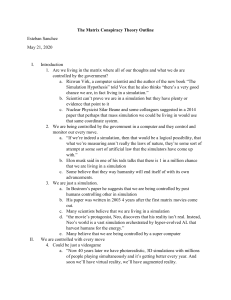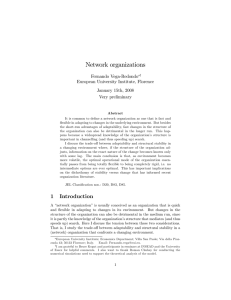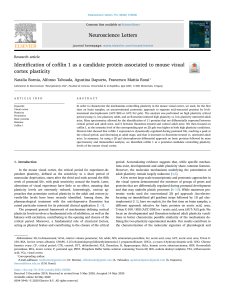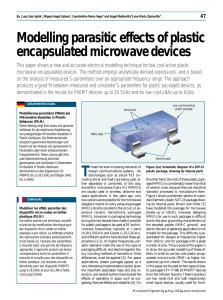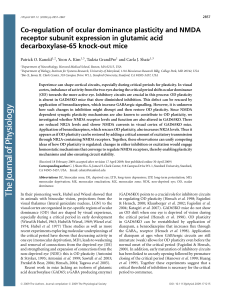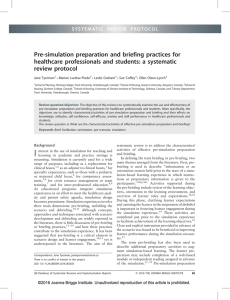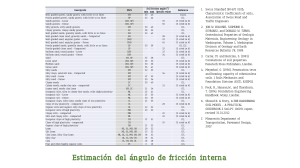UPM Grado en Ingeniería de Materiales
Anuncio
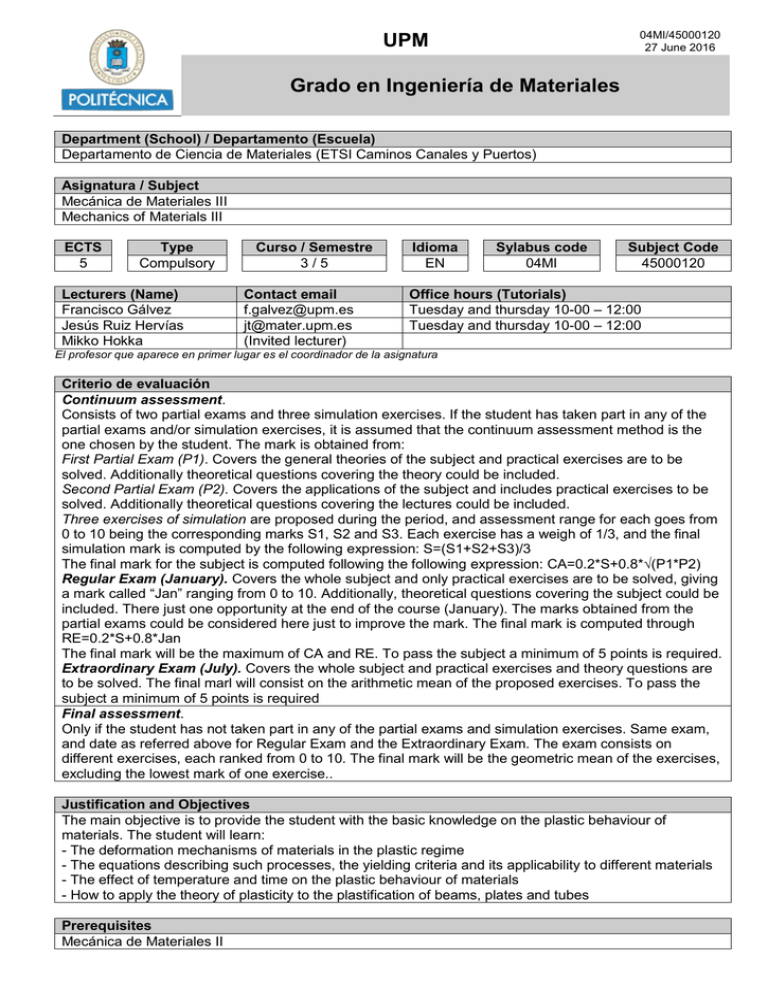
04MI/45000120 27 June 2016 UPM Grado en Ingeniería de Materiales Department (School) / Departamento (Escuela) Departamento de Ciencia de Materiales (ETSI Caminos Canales y Puertos) Asignatura / Subject Mecánica de Materiales III Mechanics of Materials III ECTS 5 Type Compulsory Lecturers (Name) Francisco Gálvez Jesús Ruiz Hervías Mikko Hokka Curso / Semestre 3/5 Contact email f.galvez@upm.es jt@mater.upm.es (Invited lecturer) Idioma EN Sylabus code 04MI Subject Code 45000120 Office hours (Tutorials) Tuesday and thursday 10-00 – 12:00 Tuesday and thursday 10-00 – 12:00 El profesor que aparece en primer lugar es el coordinador de la asignatura Criterio de evaluación Continuum assessment. Consists of two partial exams and three simulation exercises. If the student has taken part in any of the partial exams and/or simulation exercises, it is assumed that the continuum assessment method is the one chosen by the student. The mark is obtained from: First Partial Exam (P1). Covers the general theories of the subject and practical exercises are to be solved. Additionally theoretical questions covering the theory could be included. Second Partial Exam (P2). Covers the applications of the subject and includes practical exercises to be solved. Additionally theoretical questions covering the lectures could be included. Three exercises of simulation are proposed during the period, and assessment range for each goes from 0 to 10 being the corresponding marks S1, S2 and S3. Each exercise has a weigh of 1/3, and the final simulation mark is computed by the following expression: S=(S1+S2+S3)/3 The final mark for the subject is computed following the following expression: CA=0.2*S+0.8*√(P1*P2) Regular Exam (January). Covers the whole subject and only practical exercises are to be solved, giving a mark called “Jan” ranging from 0 to 10. Additionally, theoretical questions covering the subject could be included. There just one opportunity at the end of the course (January). The marks obtained from the partial exams could be considered here just to improve the mark. The final mark is computed through RE=0.2*S+0.8*Jan The final mark will be the maximum of CA and RE. To pass the subject a minimum of 5 points is required. Extraordinary Exam (July). Covers the whole subject and practical exercises and theory questions are to be solved. The final marl will consist on the arithmetic mean of the proposed exercises. To pass the subject a minimum of 5 points is required Final assessment. Only if the student has not taken part in any of the partial exams and simulation exercises. Same exam, and date as referred above for Regular Exam and the Extraordinary Exam. The exam consists on different exercises, each ranked from 0 to 10. The final mark will be the geometric mean of the exercises, excluding the lowest mark of one exercise.. Justification and Objectives The main objective is to provide the student with the basic knowledge on the plastic behaviour of materials. The student will learn: - The deformation mechanisms of materials in the plastic regime - The equations describing such processes, the yielding criteria and its applicability to different materials - The effect of temperature and time on the plastic behaviour of materials - How to apply the theory of plasticity to the plastification of beams, plates and tubes Prerequisites Mecánica de Materiales II UPM 04MI/45000120 27 June 2016 Grado en Ingeniería de Materiales Previous knowledge of the student Mathematical, Physical and Mechanical foundations of Materials Science. Mechanics of Materials I, II Contents in coordination with other subjects Mechanics of Materials I, II and IV Generic competencies CG1, CG2, CG3, CG4, CG11 Specific competencies CE2, CE5 Bibliography Comportamiento Plástico de Materiales. Vicente Sánchez Gálvez, ETSI Caminos 2014 The mathematical Theory of Plasticity, R. Hill 1950 (Ed. 1998) Theory of Plasticity, J Chakrabarty, Elsevier 2006 Basic Engineering Plasticity. W.w.a. Reed, Elsevier 2006 Plastic Behavoiur of Materials. Francisco Gálvez / Vicente Sánchez Gálvez, Under publication Subject contents and time distribution LM: Lesson at room, RP: Problems Resolution, LB: Laboratory,, TI: Individual Work, TG: Group Work, DB: Debate at Room, VI: Visits, EV: Exams, OT: Other procedures Item Contents Code P1.- Fundamentals of Plasticity EV P1.1 The tensile test. Engineering stress-strain. True stress-strain. Maximum load. StressLM, strain empirical laws. The simple compression test. The Bauschinger effect RP P1.2 Yield Criteria’s. Isotropic materials definition. Yield of metallic materials. Geometrical LM, representation. Tresca and Von Mises Criteria’s. Non-metallic materials criteria. Coulomb RP Criterion. Drucker-Prager Criterion. Strain hardening effect P1.3 Constitutive equations. Stress-strain relationship for isotropic materials. Stress-strain LM, relationship for metallic materials. Hill equations. Prandtl-Reuss and Levy-Mises RP equations. Hencky equations P1.4 Viscoplasticity. Definitions. Creep and relaxation. Logarithmic creep and Andrade. Stress LM, and temperature effects RP P1.5 Physics of Plasticity. Introduction to crystallography and micro-plasticity mechanisms. LM, Thermally activated and drag controlled dislocation motion. Creep mechanisms based on RP diffusion and dislocation glide. Mechanical twinning and phase transformations P2.- Applications in Plasticity EV P2.1 Pure bending. Hypotheses. Elastic moment and plastic moment. Plastic mechanisms LM, RP P2.2 Plastification of beams. Analysis of the process. Isostatic and hyperstatic beams. Collapse LM, loads. The extremum principle RP P2.3 Plastification of plates. Analysis of the process. The failure lines method. Collapse loads LM, RP P2.4 Plastification of tubes. Analysis of the process. Thin wall tubes. Plastification of pipes and LM, spheres. Instability. Maximum pressure. Thick wall tubes RP S.- Computational Plasticity LB, TI S Fundamentals of computational plasticity. Code types. Meshes for plastic modelling. The LM flow rule Introduction to Abaqus Student S1 Simulation exercise A: The tensile test LB, TI S2 Simulation exercise B: The compression test LB, TI S3 Simulation exercise C: Beam under pure bending LB, TI
